Part of the guided tour on Day 2 took us to a little cooperative centre close to Santa Ana del Valle, Oaxaca to see how Zapotec rugs/mats/carpets are made using methods that haven’t changed over the centuries. I still remember doing something similar when I was about 7 in Kingston school. I made an acorn placemat. Actually that should be Acorn, because I was into BBC computers at the time… There used to be a weaver in our village too using not dissimilar methods.
The Oaxacan valley’s climate isn’t ideally suited to rearing sheep so the wool is brought in from Los Altos, the first step is carding it to get all the wool fibres going in the right direction.
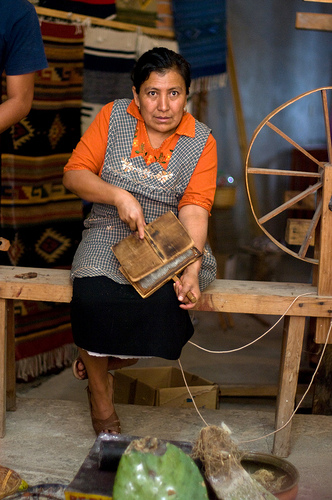
After a few minutes of carding the resulting rolag is spun into wool using a hand-turned spinning machine. It rotates a spindle which twists the wool and winds it onto the bobbin.
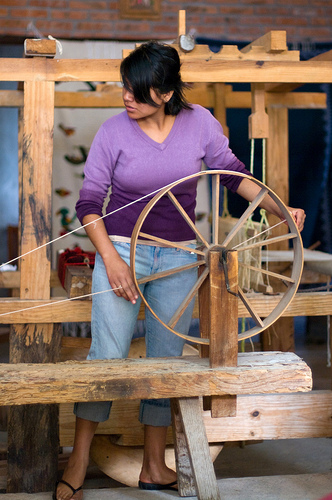
Next up is the dying process. Cheaper rugs use synthetic dyes, but here they’re still using a range of natural dyes using local ingredients. There’s a whole range of colours. Cochineal is used for the reds (the word comes from the Spanish ‘cochinilla’, woodlouse or more literally ‘little piggy’). Cochineal is harvested from the ‘leaves’ of a local cactus. The female insect is first removed from its husk (I’m making up terminology here…) then ground up with a metate (volcanic pestle and mortar type thing) and activated with lime juice to produce a deep crimson.
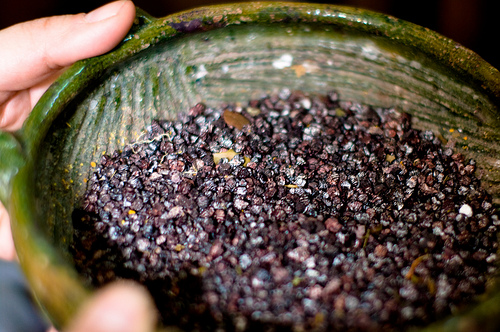

Blues come from cobalt from the coast. It’s bought in crystal form and is again activated with lime juice. Here’s the guide mixing it on his hand:
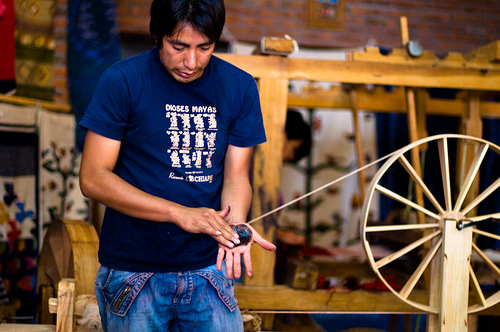
Yellow is from Cempasuchil (Marigolds)
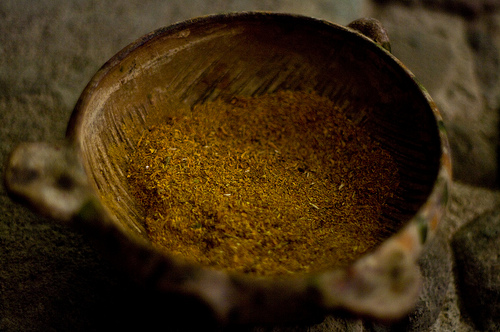
and several varieties of moss are used for green colours:
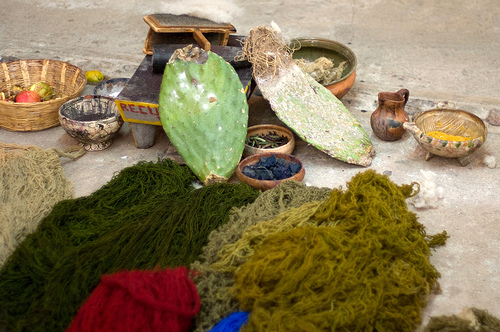
Once the dye’s mixed up to the colour they want, the wool steeps in it for 24 hours or so. Though they didn’t mention it, some kind of mordant is probably used to fix the colours at the end of the process.
When they have enough wools with the colours needed for the rug, it’s time for the loom.
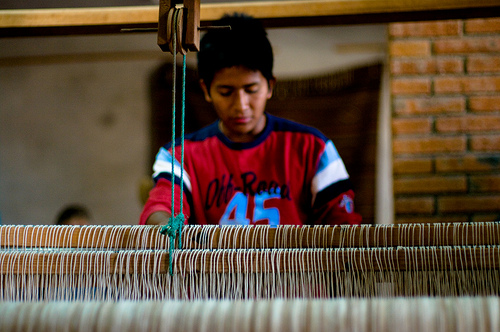
I still can’t work out how they get the complex patterns into the rugs and I was off taking pictures when they talked about the finer points of the process. It involves pedalling to swap the weft and warp and passing a shuttle between shifts is about all I know. Wikipedia on weaving will fill you in better than I ever could so I’ll just give you a few photos of the bits and pieces used in this part of the process instead:
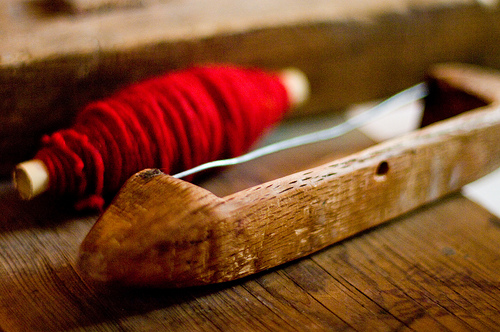
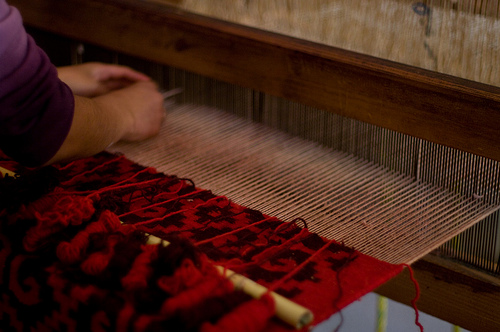

The resulting rugs are gorgeous with rich natural colours and using traditional geometric designs that can also be found decorating the Zapotec ruins down the road at Mitla. They’ll set you back a few hundred dollars but considering the huge amount of work that goes into each of them are a veritable bargain.

Next up… the difference between Mezcal and Tequila and how to make it 🙂

Excellent fotos, como siempre. Beautiful colours and designs. Hope you bought one!
A really clear account of the processes too. Not sure about the cochineal beetles, although I have used them as a food colouring in the past!
well well I always wondered about whether they really ground up beetles to make red stuff like curries and now I know the facts – it’s woodlicei(s) and blankets. Marvellous.
Thanks mum! We didn’t buy one ‘cos of space limitations but lots of other people in the group did so we didn’t feel too bad for them.
Ello Bert- Yep curries are made out of blankets. That’s how it’s done. The more blankets, the spicier they are. Like yer gravatar, matie
This is amazing! I admire the talent and patience when they weave the carpet. I remember in Iran expo there was this Persian rug, a good carpet even more precious than gold, from design, material selection to the dyeing, weaving a complex and rigorous process and after many years it’s still colorful it doesn’t fade.
We bought two. Both made of curry.
Wish to see and possibly purchase rugs. Please show how to order and the price!
Hi Bobbi,
Let me google that for you…
http://mississippiclayworks.com/Merchant2/merchant.mv?Screen=CTGY&Category_Code=WEAVEINGS